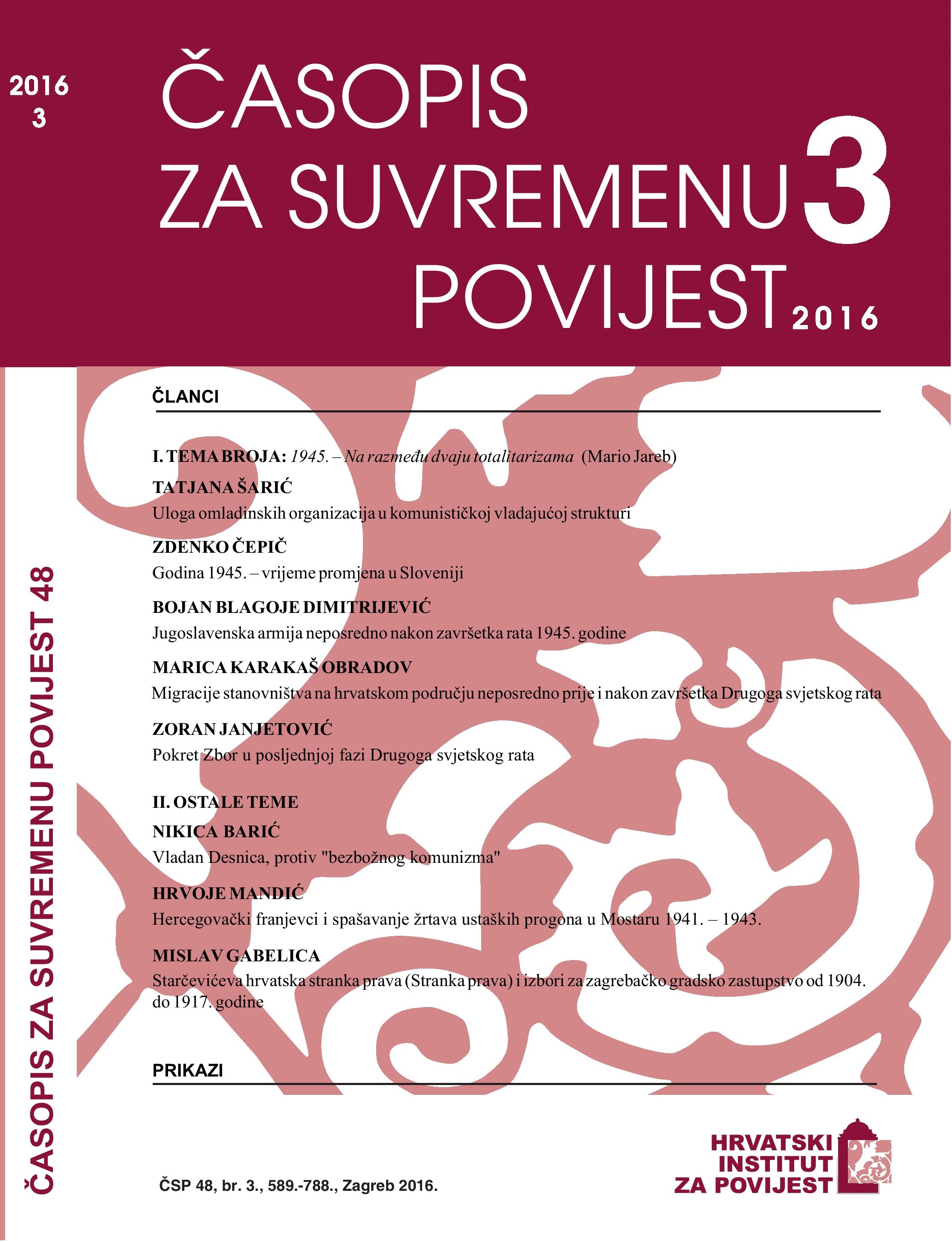Migracije stanovništva na hrvatskom području neposredno prije i nakon završetka Drugoga svjetskog rata
MIGRATIONS IN CROATIA’S TERRITORY IMMEDIATELY BEFORE AND AFTER THE END OF WORLD WAR II
Author(s): Marica Karakas ObradovSubject(s): Ethnohistory, Military history, Political history, Social history, Nationalism Studies, WW II and following years (1940 - 1949), Migration Studies
Published by: Hrvatski institut za povijest
Keywords: World War II; Independent State of Croatia; People’s Republic of Croatia, “people’s democracy”; external and internal migrations;
Summary/Abstract: Besides grave loss of human lives and destruction, World War II was characterised by mass, mostly forced migrations. The war was followed by mass external migrations (from abroad into Yugoslavia and Croatia, and vice versa), as well as internal migrations (within Yugoslavia and its people’s states/republics). Many persons from Yugoslavia, and thus from Croatia, found themselves in Germany and Austria at the end of the war. Most of them were prisoners in concentration camps, forced labourers and prisoners of war, among whom the majority were citizens of the Kingdom of Yugoslavia. Many persons, who had fled abroad from the Independent State of Croatia (Nezavisna Država Hrvatska – NDH), mostly Jews and Serbs, as well as refugees – mostly Croats – from the large refugee camp El Shatt in Egypt, were also returning to their homeland. At the end of World War II and in its immediate aftermath, a great refugee flow started, where the majority were members of the defeated side, the Ustasha Militia and Home Guard, and to some extent their families, in a “collateral forced migration”. Members of ethnic groups “unwanted” by the new Yugoslav authorities, especially Germans, Hungarians, and Italians, were either wilfully leaving or forced out of Yugoslavia. After World War II, many of the surviving Jews from Croatia and other Yugoslav territories left for Israel, which additionally reduced the Jewish community that had already been almost destroyed during the war. After the war, there was a short and rather unsuccessful episode of return of pre-war emigrants from Western Europeanand overseas countries. Mass migrations within Yugoslavia were caused by colonisation between 1945 and 1948; also, colonists from the NDH period were being relocated within Croatia. Refugees and emigrants were also being returned, especially Slovenes from Croatia and Bosnia back to Slovenia, and the Serb population from Serbia into Croatia. Knowledge about these external and internal migrations is very important for getting a perspective on the numbers and national/ethnic, age, and gender structure of the demographic and actual human losses of Croatia that were directly and indirectly caused by World War II.
Journal: Časopis za suvremenu povijest
- Issue Year: 48/2016
- Issue No: 3
- Page Range: 653-672
- Page Count: 20
- Language: Croatian

